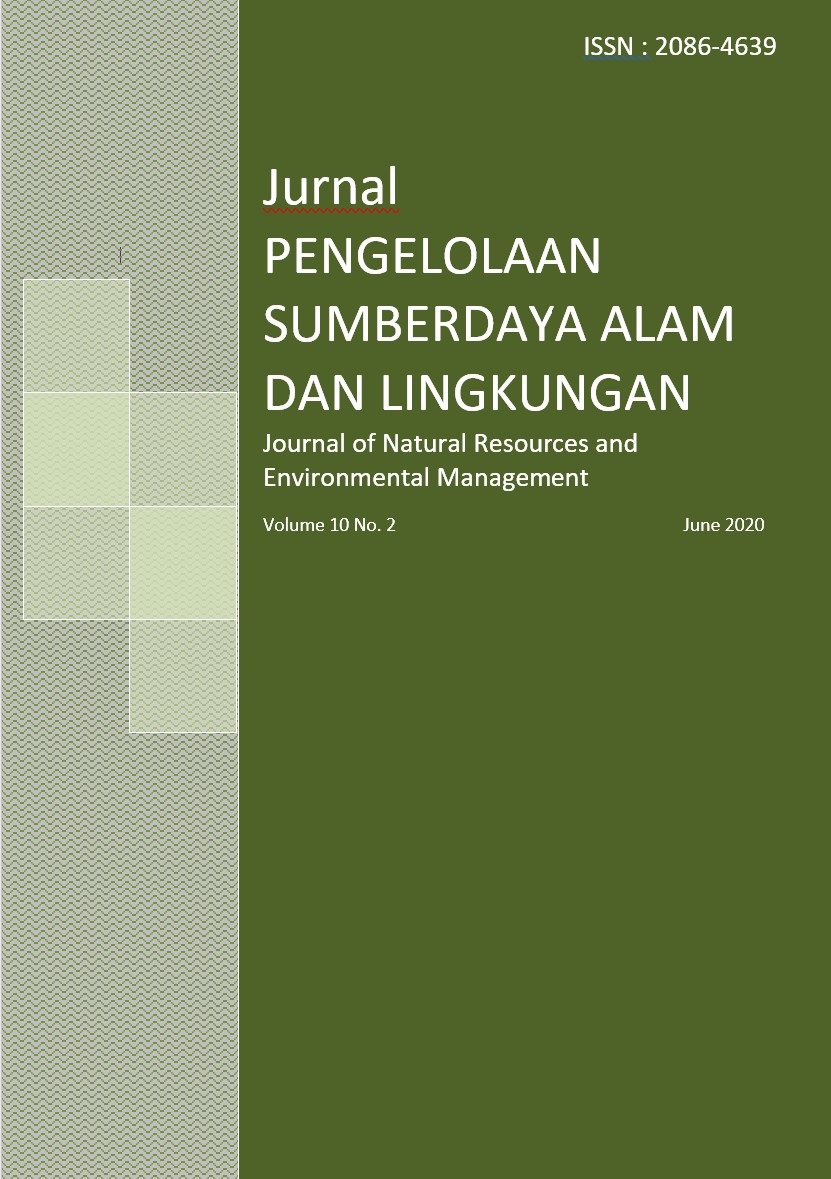Development of economic valuation method for the direct impact of alien invasive species based on food competition in aquatic ecosystems
Abstract
Alien crayfish species (Cherax quadricarinatus and Procambarus clarkii) have been found in some Indonesian area and demonstrated invasive species characters. Despite of their economy benefit the crayfish has potential ecologically disadvantage to be valuated. This study aimed to develop valuation method to estimate economical loss due to alien invasive species on food competition basis in an aquatic ecosystem. This approach was conducted by estimating the potential loss due food competition between invasive species and its inferior competitor. The case study was carried out in the Lido Lake and in an aquaculture site at Cisaat, Sukabumi – West Java. The research results that economic loss due to the disappearance of native Macrobrachium sintangense caused by the existences of single male C. quadricarinatus is 784 IDR and 1,096 for the female in Lido Lake. The potential loss of M. rosenbergii due to the single P. clarkii is 1,416.76 IDR. The difference economic loss is constituted by the quantity of feed taken by the invasive species, and the economic value of competitive inferior species. This method is clearly explained in the method section and is simple to use, but more understandable for limited economics background stakeholders. However, this approach needs robust biological dynamic model. The valuation results become important reference for the policy maker to develop risk analysis in concern of introduced invasive species into an ecosystem. For holistic economic loss value valuation, further studies covering space competition and potential harmful pathogen carrier are warranted.
Authors
Authors who publish with this journal agree to the following terms:
- Authors retain copyright and grant the journal right of first publication with the work simultaneously licensed under a Creative Commons Attribution License that allows others to share the work with an acknowledgement of the work's authorship and initial publication in this journal.
- Authors are able to enter into separate, additional contractual arrangements for the non-exclusive distribution of the journal's published version of the work (e.g., post it to an institutional repository or publish it in a book), with an acknowledgement of its initial publication in this journal.
- Authors are permitted and encouraged to post their work online (e.g., in institutional repositories or on their website) prior to and during the submission process, as it can lead to productive exchanges, as well as earlier and greater citation of published work (See The Effect of Open Access).






